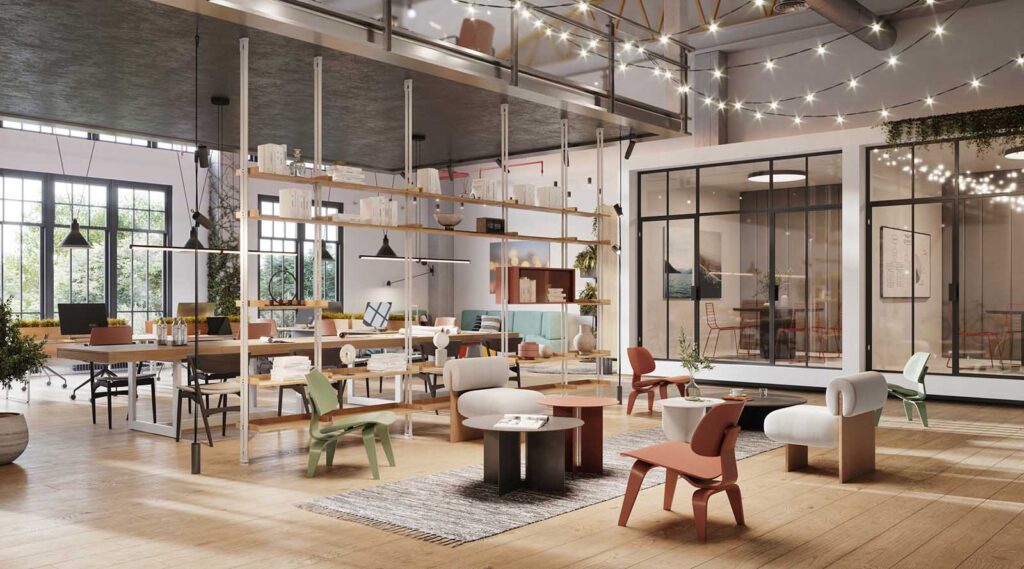Open floor plans and productivity: how open is too open?


The world’s offices are becoming increasingly dominated by the expansive and ever popular open floor plan. Tech companies swear by it and now other industries are following suit, with many saying their goodbyes to the notorious cubicle.
Open concept offices aren’t a productivity panacea, but with the right moves to balance them out, facility managers can ensure their space fosters both collaboration and focus.
What is an open office space? An open office space is a workspace without walls for offices or cubicles. Employees typically work in the same, large room, typically with the aim to spur communication and collaboration in a team environment.
The importance of striking a balance in your workplace layout is key for productivity and morale. With advancements in tech, the changing way people work and a plethora of new furniture options, your workplace strategy can be more agile.
The perks of open offices

So why are open floor plans so popular? Open offices let companies reduce costs and foster more spontaneous collaboration, not to mention increase the flexibility of what spaces can be used for. Even smaller offices can dodge a claustrophobic atmosphere and encourage social cohesion through open office plans.
Open floor plans are especially popular in industries like technology, where remote work is possible.
By allowing employees to work from home or use the physical office as a flex space, employers couple collaboration with more freedom and privacy.
Open spaces aren’t for everyone

Although these offices continue to grow in popularity, research by architecture and design firm Gensler has shown that open offices can get in the way of individually focused work. Conversely, they found that more individually focused work increases a worker’s ability to collaborate, socialize and learn.
People who consider themselves introverts or require a deep sense of focus might also find it hard to work in these environments.
Having more traditional, private spaces in your office is ideal if your workers require longer periods of deep individual focus. Number crunchers that work in banking or finance, and creatives who need alone time to reflect on their ideas can be more productive in quiet spaces.
Industries that need more confidentiality, such as legal services and mental health services, also stand to benefit from a more traditional design. Consider the industry you work in and the needs of your workers before making a switch to one layout or the other.
Pros and cons of different workplace types
Most modern workspaces have discarded the endless rows of grey, Dilbert-style cubes for more modern open workstations or even benching, where employees sit in rows very close to their colleagues. Some of the driving forces from switching from cubicles to more open plan offices are the changes in technology. A desk no longer needs to be as deep as it did in the past to accommodate a huge computer monitor. Work is more collaborative with shared networks, online documents, and software solutions making employees more productive. Real estate is costly and companies need to get the most out of their space; however, the move to open-plan offices isn’t always a silver bullet and can come with other hidden costs and issues for employees and the facilities team.
Design with balance in mind

Balance is the name of the game for facility managers who want to create a workplace that is open enough to promote collaboration, yet private enough to let workers have their space and stay focused. Any space can be fine-tuned with a little bit of creativity.
Reservable and private flex rooms are an excellent way to give your team choices in how they work. This has the two-pronged benefit of taking noisy sales calls and meetings outside of open workspaces while providing a peaceful area for workers who need some alone time.
If cordoning off private rooms isn’t realistic for you, simply designating specific areas as “quiet spaces” can signal to your team that noise and interruptions should be kept to a minimum while saving resources on your end.
Open offices have the potential to increase collaboration and creativity, but can also make focused, individual work difficult. Facility managers will have to keep balance top of mind when managing the space to make sure workers are able to prosper no matter their personality or profession.
Alternatively, provide your team with more flexible work options too like working from home or on flex time. Workers can get some control over their environment and take advantage of the collaborative benefits of an open space while preserving a sense of focus and privacy.
How software can help track desk vacancy and occupancy
The more open the office layout, the more tempting it is for employees to simply move themselves into a location they like. Without processes and policies in place, leaving employees to simply take any desk or space can wreak havoc for the facilities team. Adopting simple, user-friendly workplace technology can make the difference between a chaotic free-for-all and efficient space management. OfficeSpace’s Move Manager solves this problem by giving the ability to easily move employees and streamline move process, reducing costs and bringing a new level of efficiency to the organization that everyone will love.
Another great way to get employee buy-in is to make the company floorplans available on kiosks. This will make it easy for employees to find each other in an agile workplace and also find a seat!
Whatever you do, make sure to use a web-based solution where all employees can have access to live, up-to-date company floor maps where they can search who sits where. OfficeSpace Visual Directory® is a great solution for employees to be able to locate their co-workers, and with a powerful move management software system behind it, it’s easy for facilities to stay on top of the occupancy and vacancy of the facility.
Photos: Monkey Business Images / Shutterstock.com, Startup Stock Photos, Monkey Business Images / Shutterstock.com, Tran Mau Tri Tam



